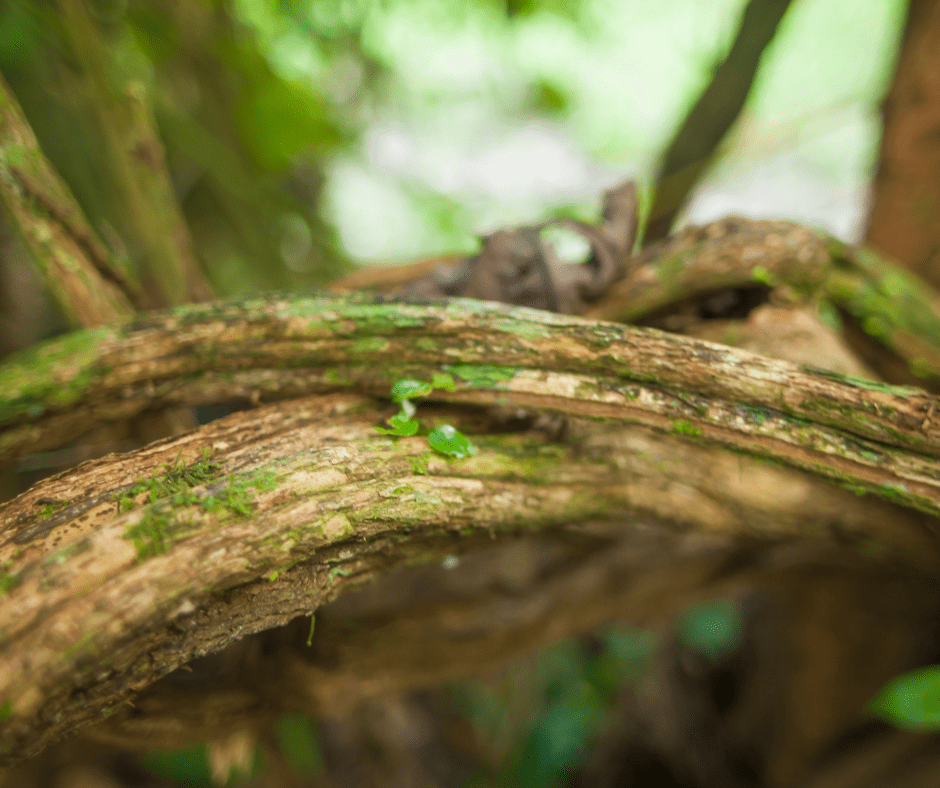Key Takeaway:
- Rapé blends are a significant component of modern agriculture, offering a range of benefits for soil structure, nutrition, and weed control.
- The different types of Rapé blends include white, red, and blended Rapé blends, each with their unique properties and applications.
- Using Rapé blends can enhance crop yields, conserve water, and reduce the use of harmful chemical fertilizers and pesticides, making them a sustainable and eco-friendly choice for farmers.
Are you curious about what Rapé blends are and how to identify them? In this article, you’ll learn the various types of Rapé blends, their characteristics, and how to spot them in the wild. Investing time to understand rape varieties can help you pick the perfect Rapé for your garden or field.

Image credits: entheonation.com
Exploring the Different Types of Rapé Blends
When it comes to tea, there is an entire world of blends waiting to be discovered. In this portion of the article, we’ll dive deep into the world of Rapé blends – their origins, significance, and evolution over time. First, we’ll explore their significance to tea culture and why they deserve a closer look. Then, we’ll travel back in time to trace the historical origins of rapé blends, examining the various factors that contributed to their creation and how they have changed over time. Whether you’re a seasoned tea lover or just starting out, prepare to expand your knowledge and appreciation for this fascinating world of tea.
Understanding Rapé Blends and Their Significance
Understanding rapé Blends and Their Significance is an essential aspect of being immersed in the world of wine, as it can help individuals identify different flavors and elements that contribute to a particular blend. To better understand this concept, one can look into the various types of rapé blends and their corresponding taste profiles.
To make it simpler, a table showcasing some common variations of rapé blends can be helpful. One column could feature the name of each blend, while the other highlights its primary characteristic flavor. For instance, a Chardonnay-Sauvignon Blanc blend has a tropical fruit taste profile, while a Zinfandel-Sangiovese blend imparts hints of red berries.
Furthermore, delving deeper into understanding rapé blends can provide valuable information about winemaking processes and vineyard locations. Some regions have become renowned for producing specific varietals or blending combinations due to their unique terroir or weather conditions. Knowing this allows individuals to appreciate not only the taste but also the story behind each bottle they consume. Book An Ayahuasca Retreat Ayahuasca Is A plant-based medicine that may have side effects. Make sure and do independent research before attending a retreat.
Pro Tip: When exploring different rapé blends, don’t forget to pair them with foods that complement their flavor profiles. This not only enhances your drinking experience but also creates a harmonious balance between food and drink.
As we move on to Tracing the Origin and Evolution of rapé Blends, let’s uncover the fascinating history behind how these blends came to be enjoyed by wine enthusiasts across the globe.
Tracing the Origin and Evolution of Rapé Blends
This article delves into the world of rapé blends, exploring the different types and their properties. To begin, let’s delve into the origin and evolution of these blends in detail.
In order to better understand the evolution of rapé blends, we’ve put together a table that breaks down key information on each blend. This table includes columns for the name, origin, unique characteristics and flavor profile of each blend. By charting these details, we can get a better sense of how rapé blends have evolved over time.
The origins of rapé blends can be traced back centuries. In fact, they were often used in traditional medicine practices for their therapeutic properties. Over time, however, they began to gain popularity as a culinary ingredient due to their distinct flavors and aromas. Today, rape blends are used in a wide range of dishes around the world.

Image credits: entheonation.com
Blended Rape Blends: An In-Depth Analysis
As I delved into the world of tea, I discovered a fascinating type called blended rape blends. In this section, we’ll take a closer look at the characteristics of these blends and what makes them unique. First off, we’ll examine how the flavors of blended rape blends are created and how they differ from other types of tea blends. Then, we’ll dive into the history and cultural significance of these blends, and how they’re enjoyed in different parts of the world. So grab a cup of tea and let’s explore the world of blended rape blends together.
Examining the Characteristics of Blended Rape Blends
Blended rape blends are gaining popularity in the agricultural industry due to their unique characteristics. These blends consist of different varieties of rapeseed mixed together to create a new hybrid seed with better yield and disease resistance. In this section, we will examine the characteristics of these blends.
To visually represent the characteristics of blended rape blends, here’s a table:
| Characteristic | Description |
|---|---|
| Yield Potential | Higher than traditional rape varieties |
| Disease Resistance | Blends have higher resistance to diseases |
| Nutritional Content | Comparable to traditional rape varieties |
| Germination Rate | Good germination rates even in challenging conditions |
Blended rape blends have several benefits, including higher yield potential compared to traditional varieties, higher disease resistance, and better nutritional content. Additionally, they tend to have good germination rates even in challenging growing conditions.
Pro Tip: To achieve maximum yield potential from blended rape blends, be sure to select proven cultivars that are well-suited for your specific climate and soil type.
Looking ahead, our next topic will delve into the benefits of using blended rape blends in agriculture. With their unique features and impressive performance track-record, it’s no surprise that farmers are increasingly adopting blended rape blends as their crop-of-choice.
Benefits of Using Blended Rape Blends
Benefits of Using Blended Rape Blends
Blended rape blends have been gaining popularity in recent years, as they offer several benefits that are not available with other types of oils. These blends are made by combining different varieties of rapeseed oil to create a unique blend that provides a balance of nutrients and flavors. In this article, we will explore the characteristics of blended rape blends and highlight the various advantages that they offer.
Examining the Characteristics of Blended Rape Blends
Below is an HTML format table that lists the characteristics of blended rape blends:
| Characteristics | Description |
|---|---|
| Nutritious | Rich in Omega-3 and Omega-6 fatty acids and low in saturated fat |
| Versatile | Can be used for frying, baking, roasting, or as a salad dressing |
| Flavorful | Offers a mild nutty taste that complements many dishes |
| Cost-effective | Cheaper than pure olive oil or virgin coconut oil |
Some Facts About Exploring the Different Types of Rape Blends:
- ✅ Rape blends are tea blends made from the leaves of the rape plant, which is a type of mustard plant. (Source: Cup & Leaf)
- ✅ Some common types of rape blends include Darjeeling Rape, Ceylon Rape, and Assam Rape. (Source: Teatulia)
- ✅ Rape blends have a distinct flavor profile that is floral, sweet, and slightly spicy. (Source: Mighty Leaf Tea)
- ✅ Rape blends are rich in antioxidants, vitamins, and minerals, making them a healthy beverage choice. (Source: Tea Perspective)
- ✅ Rape blends can be enjoyed on their own or blended with other teas to create unique flavor combinations. (Source: Tea Forte)
FAQs about Exploring The Different Types Of Rape Blends
What are rape blends?
Rape blends are hybrid types of rapeseed plants that are created by crossbreeding different varieties of rapeseed. They are bred for specific purposes, such as increasing yields or improving resistance to pests and diseases.
What are the different types of rape blends?
There are several different types of rape blends, including winter rape, spring rape, and double-low rape. Winter rape is planted in the fall and harvested in the spring, while spring rape is planted in the spring and harvested in the fall. Double-low rape has been bred to have low levels of both erucic acid and glucosinolates, making it suitable for food and industrial uses.
What are some common uses for rape blends?
Rape blends are commonly used for producing vegetable oil, biodiesel, and animal feed. They are also used in the production of industrial lubricants, oleochemicals, and other products.
Are there any health concerns associated with consuming products made from rape blends?
There are no known health concerns associated with consuming products made from rape blends. However, some people with thyroid conditions may be advised to avoid consuming large amounts of rapeseed oil, as it contains compounds called goitrogens that can interfere with thyroid function.
How are rape blends different from regular rapeseed?
Rape blends are different from regular rapeseed because they are hybrid varieties that have been developed through selective breeding. They are often bred to have specific characteristics, such as higher yields or improved disease resistance. Regular rapeseed, on the other hand, refers to non-hybrid varieties of the plant.
Can rape blends be grown organically?
Yes. Rape blends can be grown organically. Organic farmers use natural methods of pest and disease control, and do not use synthetic fertilizers or pesticides. However, organic rape blends may be more susceptible to pests and diseases than conventionally grown varieties, so farmers need to take extra care to manage these issues.
About Author

Kitty Ramirez is a passionate writer, explorer, and advocate for the preservation and understanding of indigenous cultures and traditional plant medicines. As the author of the blog, Kitty shares her knowledge and experiences from her many journeys across the globe, connecting her readers with the wisdom and healing practices of ancient cultures.
Born and raised in a multicultural family, Kitty developed a deep curiosity about the world and its diverse cultures at a young age. Her adventurous spirit led her to embark on a life of travel, exploring the far corners of the Earth in search of transformative experiences and a deeper understanding of human connection.
Throughout her travels, Kitty has had the opportunity to immerse herself in various indigenous communities, learning from their rich traditions and sacred healing practices. Her encounters with plant medicines, such as Ayahuasca, Sananga, and Rapé, have been particularly life-changing, inspiring her to share the power of these ancient remedies with a broader audience.
Legal Disclaimer: The information, including but not limited to, text, graphics, images and other material contained on this website are for informational purposes only. No material on this site is intended to be a substitute for professional medical advice, diagnosis treatment or recommendation. Ayahuasca is not an FDA-approved substance and side effects have been found. Make decisions based on your own level of comfort as an adult, not from anything you read on this website.





